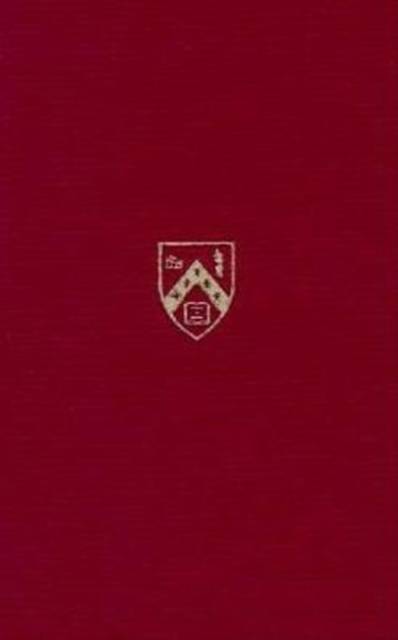
Je cadeautjes zeker op tijd in huis hebben voor de feestdagen? Kom langs in onze winkels en vind het perfecte geschenk!
- Afhalen na 1 uur in een winkel met voorraad
- Gratis thuislevering in België vanaf € 30
- Ruim aanbod met 7 miljoen producten
Je cadeautjes zeker op tijd in huis hebben voor de feestdagen? Kom langs in onze winkels en vind het perfecte geschenk!
- Afhalen na 1 uur in een winkel met voorraad
- Gratis thuislevering in België vanaf € 30
- Ruim aanbod met 7 miljoen producten
Zoeken
€ 80,95
+ 161 punten
Omschrijving
Pierre Rousselot was a young Jesuit when his article "The Eyes of Faith" was published in the French theological journal Recherches de Science Religieus in 1910. Though widely acknowledged today as one of the most penetrating and influential analyses of the act of faith in modern Catholic theology, it was perceived by the Neo-Scholastic theologians of the day as a major assault on their own method and doctrine, which they regarded as faithful to St. Thomas and the Thomistic tradition.
The most serious critiques were written by the Abbe Hippolyte Ligeard, a specialist in the history of the treatises on faith and apologetics in the Middle Ages, and by Stephane Harent, Rousselot's former professor in the Jesuit scholasticate at Hastings, who published their criticism, respectively, in Recherches de Science Religieuse and in the Dictionnaire de theologie catholique. Rousselot, defending his thesis, published his "Answer to Two Attacks" soon afterward. The present volume contains the first English translation of "The Eyes of Faith," preceded by a substantial introduction placing Rousselot in the intellectual climate of the day and examining some of the presuppositions of the essay. A translation of Rousselot's "Answer to Two Attacks" is also included, as is an introduction that outlines Abbe Ligeard's and Professor Harent's main criticisms of "The Eyes of Faith." Taken as a whole, the book offers a unique way of viewing the development of a significant aspect of modern Catholic theology.Specificaties
Betrokkenen
- Auteur(s):
- Uitgeverij:
Inhoud
- Aantal bladzijden:
- 117
- Taal:
- Engels
Eigenschappen
- Productcode (EAN):
- 9780823212880
- Verschijningsdatum:
- 1/01/1990
- Uitvoering:
- Hardcover
- Formaat:
- Genaaid
- Afmetingen:
- 145 mm x 223 mm
- Gewicht:
- 326 g

Alleen bij Standaard Boekhandel
+ 161 punten op je klantenkaart van Standaard Boekhandel
Beoordelingen
We publiceren alleen reviews die voldoen aan de voorwaarden voor reviews. Bekijk onze voorwaarden voor reviews.









